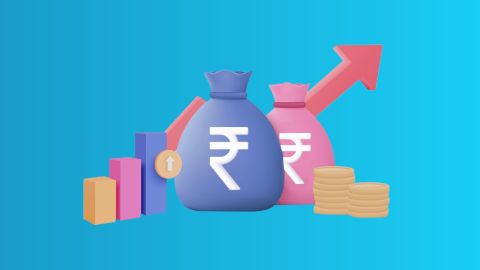GST is levied at every stage of the supply chain, with credit available for input taxes paid, ensuring that only the value addition is taxed. The GST regime is divided into CGST, SGST, and IGST, depending on the transaction type and location.
What is GST?
Goods and Services Tax (GST) is a comprehensive indirect tax levied on the supply of goods and services in India. It is designed to replace multiple indirect taxes like VAT, service tax, and excise duty, simplifying the tax structure. GST aims to create a single, unified market by eliminating the cascading effect of taxes.
Introduction to CGST, SGST, and IGST
The GST structure in India is divided into three main components: Central Goods and Services Tax (CGST), State Goods and Services Tax (SGST), and Integrated Goods and Services Tax (IGST). This division helps streamline tax collection and ensures proper revenue distribution between the central and state governments. Businesses also need to consider the GST registration fees when registering under the GST system to comply with regulatory requirements.
CGST is the tax collected by the Central Government on an intra-state supply of goods and services. It is governed by the Central Goods and Services Tax Act, 2017, and ensures that the central government receives its share of revenue from within the state.
SGST is the counterpart of CGST, collected by the State Governments on intra-state transactions. The State Goods and Services Tax Act, 2017, governs it, and the revenue collected under SGST remains with the state where the supply is made.
IGST applies to inter-state transactions and imports. It is governed by the Integrated Goods and Services Tax Act, 2017. The revenue collected under IGST is shared between the Central and State Governments based on a predetermined formula. IGST facilitates seamless trade between states and helps maintain a unified market across India.
These three components ensure a balanced distribution of tax revenue and prevent tax evasion, providing a transparent and efficient tax system. To better understand key aspects of GST, explore the features of GST, which provide deeper insights into its working.
Difference between CGST, SGST, and IGST
| Aspect | CGST (Central Goods and Services Tax) | SGST (State Goods and Services Tax) | IGST (Integrated Goods and Services Tax) |
| Applicability | Intra-state transactions | Intra-state transactions | Inter-state transactions and imports |
| Governing Authority | Central Government | State Government | Central Government |
| Revenue Distribution | Central Government | State Government | Shared between Central and State Governments |
| Law | Central Goods and Services Tax Act | State Goods and Services Tax Act | Integrated Goods and Services Tax Act |
| Example | Sale of goods within Maharashtra | Sale of goods within Karnataka | Sale of goods from Maharashtra to Gujarat |
How are SGST, CGST and IGST collected?
CGST and SGST collection:
- Collected on intra-state transactions.
- The CGST portion goes to the central government, while the SGST portion is credited to the state government where the sale occurs.
IGST collection:
- Collected on inter-state transactions and imports.
- The central government collects IGST, which is later apportioned between the centre and states.
Businesses must also understand the uin under GST for tracking and unique identification of taxpayers.
Returns filing:
- Businesses must file GST returns, specifying the CGST, SGST, and IGST collected.
- The returns help in the systematic distribution of taxes to respective authorities.
Why is split into SGST, CGST, and IGST?
Revenue sharing:
- Ensures fair distribution of tax revenue between the central and state governments.
Compliance and governance:
- Facilitates compliance and governance, allowing both central and state authorities to monitor and administer taxes.
Market integration:
- Supports a unified national market by ensuring that tax policies do not differ significantly across states.
How are input tax credits adjusted? Offset liability in GST?
Input tax credit (ITC) allows businesses to reduce their tax liability by claiming credit for taxes paid on inputs. Under GST, ITC can be used to offset the tax liability in the following order:
- CGST: ITC on CGST can be used to offset CGST liability. Any remaining ITC can be utilised against IGST liability.
- SGST: ITC on SGST can be used to offset SGST liability. Any leftover ITC can offset IGST liability but not CGST.
- IGST: ITC on IGST can first offset IGST liability, followed by CGST and then SGST.
Conclusion
The GST system in India, encompassing CGST, SGST, and IGST, provides a structured and transparent tax framework, facilitating ease of doing business. The separation into these three components ensures efficient tax collection and fair revenue distribution between the central and state governments. Businesses benefit from the streamlined input tax credit mechanism, which helps manage cash flows and reduce tax burdens. This comprehensive approach to taxation not only simplifies compliance but also fosters economic growth, making it easier for businesses to navigate the financial landscape.
Get the funds you need with Bajaj Finserv Business Loan
Here are some of the key advantages of our business loan that make it an ideal choice for managing your business expenses:
- Simplified application process: Online applications streamline the process, reducing paperwork and saving time.
- High loan amount: Businesses can borrow funds up to Rs. 80 lakh, depending on their needs and qualification.
- Quick disbursal: Funds can be received in as little as 48 hours of approval, allowing businesses to respond promptly to opportunities and needs.
- Competitive interest rates: The interest rates for our business loans range from 14 to 26% per annum.




